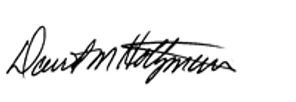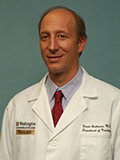November 2017
It was wonderful to see so many of you at the Annual Meeting last month in San Diego, where I was privileged to accept the gavel as the 129th president of the American Neurological Association. Taking on this role in our prestigious organization at a time when academic neurology is energized by unprecedented advances is an exciting challenge, and I am inspired by the ANA's potential to enrich careers and move academic neurology forward.
As is the case for so many of us, the ANA has had a meaningful role in my career, and I am proud to take a turn leading it in the service of my colleagues nationwide. As chair of the Department of Neurology at Washington University in St. Louis, the ANA has been a key resource in developing the careers of my faculty, providing experiences that have informed them and kept them engaged in the field.
I was proud to see my colleague Conrad Weihl, MD, PhD, present at this year's meeting as a Derek Denny-Brown award recipient; he is now serving on the ANA's Scientific Program Advisory Committee. He is just one example of how our department has embraced the ANA's offerings for professional enrichment. As we enter 2018, I urge you to reflect on how you can take advantage of all the ANA offers to access new knowledge, new opportunities and new collaborations for yourself and your team.
And I urge you, as well, to take one step this year to increase your involvement in the ANA. Join a committee. Submit a paper to the Annals or ACTN. Sign up with ANA's new MentorLink to be a mentor or to find one. Submit an abstract for the ANA 2018 meeting in Atlanta. Apply for an international scholarship. Any one of these steps can create a rewarding new path for your work.
Thanks to the outstanding leadership of Immediate Past President Dr. Barbara Vickrey and the board and executive team, we have inherited an organization that has already taken its mission of advancing the goals of academic neurology to the next level. During my term, I plan to continue to bring new academic neurologists and neuroscientists into the fold to build a strong and diverse pipeline for the future. The disease challenges we face will be well served by physicians, physician-scientists, and scientists of varied academic and personal backgrounds, well versed in technology, and exposed to international, urban and rural settings.
Specifically, I am energized by the plans of the first two recipients of the ANA global neurology scholarship, who will study Nodding Syndrome in Uganda and Parkinson's disease in Zambia. These programs acknowledge the critical opportunities for neuroscience research in developing countries around the world.
Like many of you, I believe that the academic neurologists' unique perspective of both the patient experience and the science behind it is essential to moving the needle on devastating neurologic disease. This year's Annual Meeting exemplified the ANA's role as a unifying force that brings academic neurology together to maximize our impact.
There is perhaps no greater crucible for this crucial give-and-take than at the poster presentation sessions. Here, experienced faculty from dozens of Universities and countries offer specific feedback while hearing the aspirations, challenges and new ideas of trainees. In fact, it was in front of a poster a few years ago that I discovered a technology that an early-career researcher was using that facilitated a collaboration. I was subsequently able to utilize this technology in my own lab and apply for and receive an NIH grant to study sleep and Alzheimer's related proteins.
These interactions embody my goal for the ANA: to prioritize collaboration across career levels and bring together the people and perspectives that will move us all forward.
In this vein, I hope that all senior ANA members will register with the new ANA MentorLink online platform to establish a robust network across many of the sub-disciplines.
In addition, we aim to:
- Maintain the things that are working well -- the quality of the Annual Meeting, the involvement of the leaders in academic neurology;
- Raise awareness of the ANA throughout our institutions so that junior faculty are hearing about the ANA's benefits not only from their department chairs but from one or two other members as well;
- Connect with each University to find a champion to make it easier for adult and pediatric neurology residents to attend the meeting and take advantage of travel awards;
- Encourage more ANA members to submit their papers to the Annals of Neurology and ACTN, both prestigious journals with strong impact factors;
- Continue to build a strong policy voice in U.S. medicine and science, and advocate for maintaining NIH and other critical sources of funding by partnering with other organizations that share our goals, including AAMC, AAN and SFN.
- Document ANA members' exceptional contributions to academic neurology in Memory Bank, the newly-launched archives of the ANA, accessible at myana.org/memory-bank. Members can log in to begin exploring Memory Bank; we ask that non-members fill out a brief request form.
These are just some of my initial ideas for making the ANA the champion of all neurologically-oriented physicians and scientists who strive to make a difference through careers that combine discovery, education and clinical care.
I would like to hear your ideas as well. Please write to info@myana.org with your thoughts. I look forward to working with all of you over the next two years to add a worthy new chapter to our esteemed ANA.
Sincerely, 
David M. Holtzman, MD
President, American Neurological Association
Andrew B. and Gretchen P. Jones
Professor and Chairman, Department of Neurology
Washington University School of Medicine

